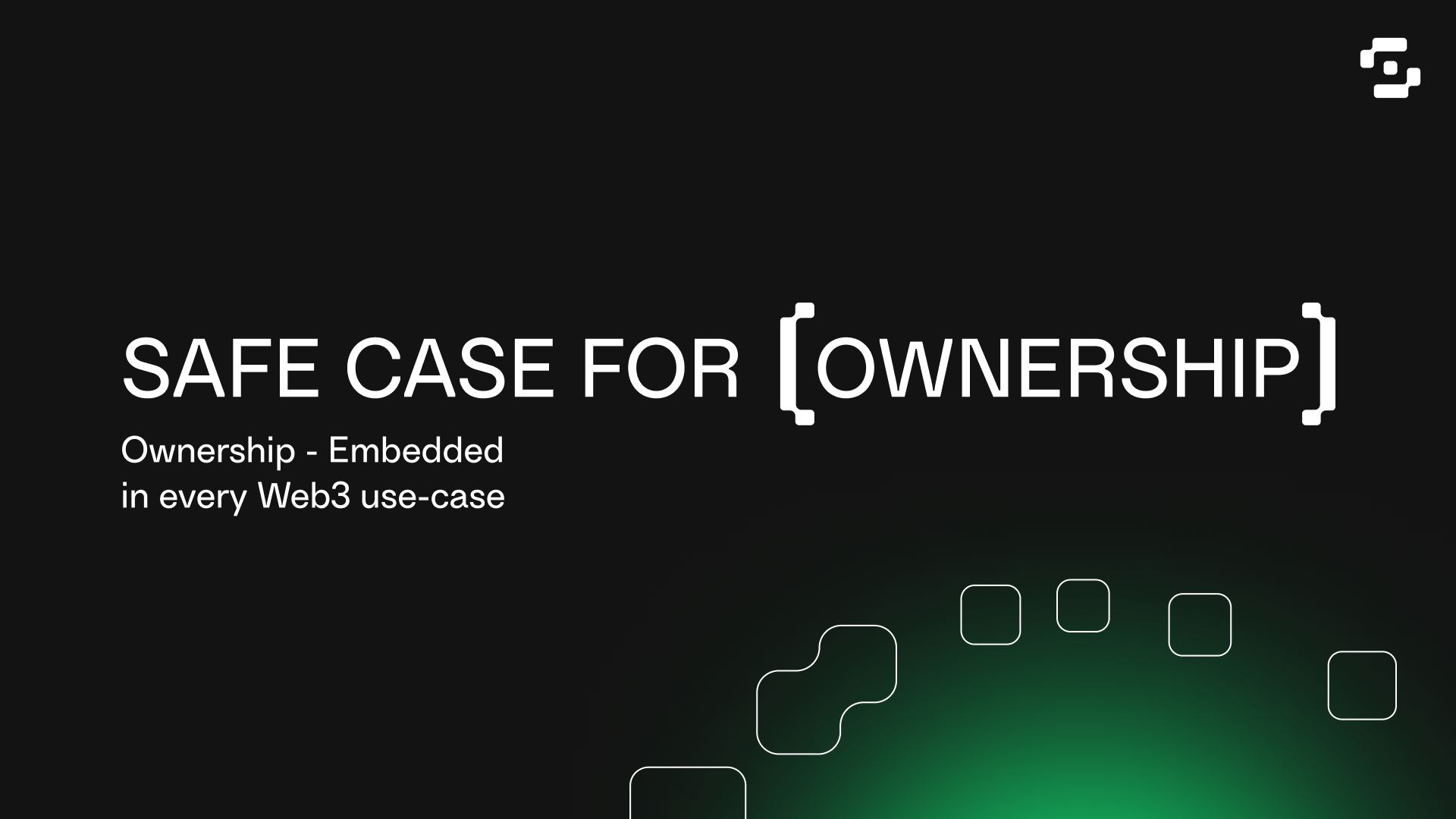The Safe Case: Infrastructure for Institutional Crypto Self-Custody

As crypto goes mainstream, institutions are taking notice. Enter Safe, the smart contract account platform becoming the go-to self-custody solution for all institutions.
As crypto goes mainstream, institutions are taking notice. But as banks, VCs and other big players enter the space, they face a tricky question: how do you securely store and manage digital assets?
Enter Safe, the smart contract account platform becoming the go-to self-custody solution for all institutions.
With over $100B in assets secured, nearly $1T in total transaction volume, 8M+ accounts, and already used by players like 1kx and Wintermute, Safe has proven its chops as institutional-grade infrastructure. But what exactly makes Safe so appealing to the suits and ties set?
 Putting Safe’s secured assets in relation to fintechs
Putting Safe’s secured assets in relation to fintechsFrom Visa, Sygnum, Cobo, 1k(x) and many more, the case for Safe across payments, regulated custodians, banks, VCs and more is only increasing.
The Institutional Custody Problem
The problem of asset management for VCs and institutional investors is multi-faceted: the main question being how do you create a flexible yet secure operational foundation for a fund or complex investment manager?
As 1k(x) puts it in their Investment Thesis on Safe:
"As long-time users, we already saw Safe as critical infrastructure for the space, but we were even more excited about what was to come. Safe's value proposition is much more than a standalone multisig wallet. It was designed to be a fully secure, programmable platform for ownership. Over the past two years, we have worked with the team to build out this vision and continue to hit its strides through Safe{Wallet} and Safe{Core}."
Security: The Fort Knox of the Blockchain
Live since 2016 and built on formally verified open-source infrastructure, Safe's security and Lindy effect has convinced financial institutions to build on top of and trust Safe.
Safe continues to add enhanced security for on-chain treasury management. For example, the integration of Redefine's DeFirewall into Safe{Wallet} elevates the level of protection over assets while guaranteeing greater transaction security, paving the way for greater adoption of digital assets. By scrutinizing each transaction before execution, it generates detailed risk reports and actionable insights. This innovative tool not only strengthens the security of institutions' assets but also acts as a powerful deterrent against the unauthorized use of funds.
Unlocking Programmable Self-Custody
Aside from being investors in Safe, liquid token funds such as 1kx, are using Safe as the foundation for their on-chain trading and investing activities. With features like daily spending limits and role-based permissions, Safe makes it easy to set guardrails and manage risk across a large organization.
One example is the Recovery module, where upon opt-in installation, the user can designate a Recoverer and customize recovery conditions. Safe's Recovery Hub will make use of this module to provide a curated marketplace of crypto recovery options, starting with Sygnum and Coincover, which caters to individuals, DAOs, and institutions of varying preferences for recovery solutions and providers. One of the major problems with using traditional EOAs in a self-custodial setup is that there was no support or team to call if something went wrong. With recovery, this is now possible giving institutions the peace of mind required to operate onchain.
Other examples of modules include session keys, account automation, and spending limits. The Zodiac team has thus far been responsible for the most prolific set of Safe modules. But in the past year we have seen dedicated module infrastructure projects such as Rhinestone and ZenGuard emerge to accelerate the development of modules via developer tools and module registries to make smart accounts more powerful than ever before.
Safe is also enabling new custody models that blur the line between self-custody and third-party control. Hybrid approaches let institutions tap external partners for services like recovery while still retaining ultimate ownership of their assets.
For example, the Roles Modifier Module can enable:
Auto-payments which provide very restricted access to a user’s Safe to settle payments either triggered by a subscription or a card payment, such as the case of Gnosis Pay.
Automatic liquidation allowing crypto lenders to liquidate positions in the case of under-collateralization, eliminating the need for a custodian and the associated costs for custodying the collateral.
Both examples showcase that financial institutions can serve customers without the customer giving up control. The end user always remains in full custody of their assets, but via the smart and safe usage of modules. Third parties can gain limited and predefined access to funds, but these permissions can of course be revoked by the customer at any time.
Products like Cobo Argus are building on top of Safe and bringing together all of these novel features into a single, unified institutional-grade solution. Flexible custody allows users to move between a gradient of full centralized custody to full self-custody with MPC and other solutions in between to create the most flexible and secure workflow.
The Future of Financial Infrastructure
It's not hard to imagine a future where Safe powers an entire backend layer of crypto-enabled financial services. Onramps, trading venues, lending platforms - all running on Safe's battle-tested rails.
“The Bitcoin ETF narrative dominates institutional adoption discussions, but it’s merely a distant price proxy wrapped in traditional finance instruments. True crypto benefits come from self-custody, not just being customers of financial intermediaries. However, custody and self-custody aren’t mutually exclusive. Regulated institutions increasingly offer both, and hybrid custody solutions enable institutions to serve users with their self-custody. The design space is wide open, and I’m excited to see how innovators leverage this infrastructure.” – Julian Grigo, Head of Institutions and Fintech at Safe
Read more

Get the Alpha
Sign up to hear the latest from Safe in your inbox
©2023–2025 Safe Ecosystem Foundation


